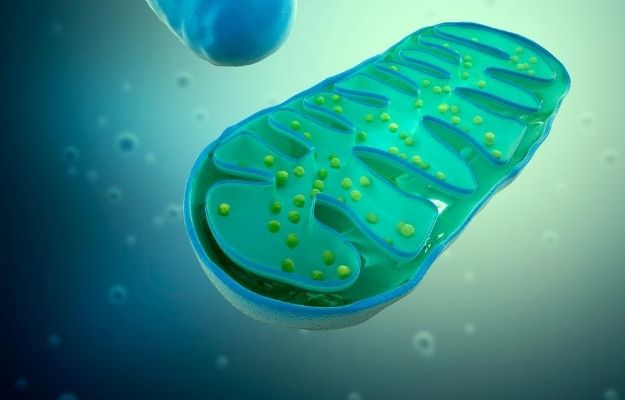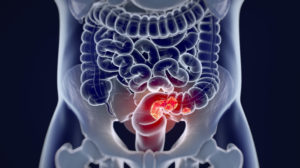A recent study shows how cellular respiration relieves symptoms of Parkinson’s Disease. Keep reading to learn more about it.
RELATED: What Is NAD+? (And Why We Need It)
In this Article:
- Parkinson’s Disease
- Causes of Parkinson’s Disease
- Cellular Respiration Compound: NAD
- 2019 Animal Study
- Animal Study Findings
- Implications of Findings
Cellular Respiration Compound Offers Potential New Treatment for Parkinson’s Disease
Parkinson’s Disease

Parkinson’s disease is a progressive brain disorder. Over time, this disorder affects an individual’s movement.
It can manifest in different ways for everyone, but the typical Parkinson’s symptoms include:
- Tremors or shaking. This usually starts in the limbs (fingers or hands). People often notice it when limbs tremble or shake even if it’s in an inactive or resting position.
- Stiffness. Rigid or stiff muscles can limit the range of motion. This can happen in different areas of the body.
- Slower movement. This also refers to bradykinesia. When this symptom appears, it may take longer than usual to complete simple tasks.
- Poorer balance and coordination. Posture changes may occur and impact balance.
- Language changes. Speech and writing abilities may change. Speech may become slurred, and the range may become limited. Fine motor skills may begin to decline as well, and writing may become more challenging.
Apart from these, it may also become more challenging to exhibit automatic or unconscious movements. This includes smiling, blinking, or arm swinging.
Causes of Parkinson’s Disease
A gradual breakdown of dopamine-producing neurons can lead to Parkinson’s disease. The exact cause of this breakdown is still uncertain, but researchers think that the following factors may contribute to it.
- Genetic – certain rare genetic mutations can trigger Parkinson’s disease.
- Malfunctioning mitochondria – the mitochondria generate the cell’s energy. It’s often called the powerhouse of the cell.
- Oxidative stress – a state where there’s an abundance of free radicals in the body and not enough antioxidants.
These factors can cause cellular changes, which can lead to the destruction of dopamine-producing neurons. Age is a common risk factor associated with Parkinson’s disease.
Most people diagnosed with the disease are 60 years old or older. Early-onset Parkinson’s disease is linked to genetic predispositions or gene mutations. There is no cure for Parkinson’s disease, but there are recent studies that bring us closer to viable treatment options and preventive measures.
Cellular Respiration Compound: NAD

To understand the factors that contribute to the loss of dopamine-producing neurons, researchers are zoning in on nicotinamide adenine dinucleotide (NAD).
What is NAD? It is an important coenzyme that is found in every cell of the body. It contributes to a variety of metabolic processes, including cellular respiration.
Studies show that lower levels of NAD lead to the following cellular outcomes:
- DNA repair defects
- Mitochondria impairment
- Neuronal death
These outcomes contribute to a variety of neurodegenerative diseases. NAD also declines with age, so researchers believe that increasing NAD levels may prevent neuronal death.
RELATED: What Is Biological Age? | Why It Matters And How To Reverse It
2019 Animal Study
A group of researchers tested this hypothesis and published their results in August 2019. They published their study in the journal Progress in Neuro-Psychopharmacology and Biological Psychiatry.
In their study, the researchers wanted to determine if injecting NAD into the striatum could ease Parkinson’s symptoms.
What is the striatum? It is a brain region that contains neuronal circuits that regulate voluntary movement.
Using the animal model, the researchers injected NAD in the right striatum of rodents. There was also a control group of rodents who did not receive the NAD injection. Four hours after the initial injection, they injected 6-hydroxydopamine (6-OHDA) in all of the rodents.
6-OHDA is a neurotoxin that somewhat mimics Parkinson’s disease. It causes the death of dopamine-producing neurons and cellular dysfunction. After administering the injections, the researchers monitored the rodents.
Animal Study Findings
After one month, the researchers assessed the rodents again. Here are some of their findings:
- The rodents who received the NAD injections had less severe motor symptoms than those who did not receive the NAD injections.
- 6-OHDA causes the loss of neurons. In the rodents who received the NAD injections, there was a significant reversal of this loss in the striatum and substantia nigra (another brain region that regulates motor function).
- 6-OHDA reduces approximately 50% of cell viability. Using cell culture technology, the researchers examined the structural and molecular damage caused by 6-OHDA. There was a significant reduction of damage in rodents who received the NAD injection. In fact, the 6-OHDA alterations were reversed after the NAD pre-treatment.
Implications of Findings
These results show the benefits of NAD on rodents with neurodegeneration, similar to Parkinson’s disease. While there is no cure for Parkinson’s disease, these results indicate that NAD has potential as a way to prevent and treat the condition.
Researchers still need to conduct more studies to see if this is a viable treatment option for human patients. In the meantime, connect with the TruDiagnositc team if you’re interested in learning more about NAD and what it can do for your overall health.
What are your thoughts on these interesting findings? Share them with us in the comments section below.
Source:
Up Next:





